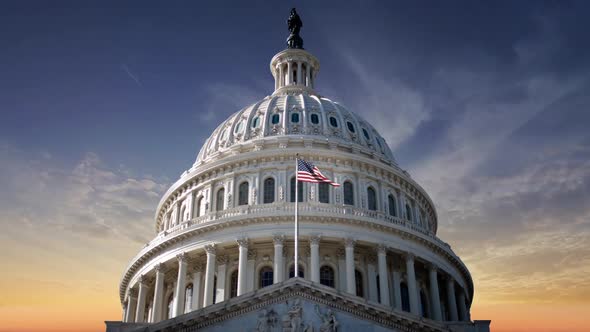
Across North America, policymakers, fintech companies, and financial services firms are finally beginning an earnest dialogue about open banking. The Senate Banking Committee recently touched on the issue at a Sept. 18 hearing — one of the first official discussions in the halls of Congress.
It’s good this conversation is getting started because the U.S. has a lot of catching up to do.
In the United States currently, there’s no legal requirement stipulating a financial institution must make a consumer’s financial data available to a third party in the event that a consumer provides affirmative consent. The ability to successfully utilize technology-based tools rests almost entirely with the inclination of the user’s financial institution, and not all are disposed to allow permission to third-party tools, some of which compete directly with their own products and services. Indeed, the Treasury Department has said access is “frequently and unilaterally restricted, interrupted, or terminated by financial services companies.”
Yet consumers already have demonstrated their desire for open banking. By 2017, 87% of individuals preferred to adopt a fintech application rather than use a product or service offered by a traditional financial services provider, but today U.S. consumers’ ability to use those applications can be restricted or outright blocked.
This regime hampers financial innovation to the detriment of consumers and small businesses. It means fintech firms and aggregators, even with a consumer’s consent, must painstakingly negotiate with banks to gain access to the information they need to deliver innovative applications and products that could help consumers manage daily finances, expand savings, or plan for retirement.
Some forward-thinking financial institutions have created direct feeds, such as application programming interfaces, that allow aggregators and third parties access to consumer data. But the vast majority of U.S. financial institutions have not. The significant capital investment required to build and maintain these feeds typically results in only the largest U.S. financial institutions deploying them (if they’re willing), which results in the millions of Americans who still bank with community institutions being left behind.
Improving the system is a daunting task.
To start, the regulatory system governing fintech in the United States — as compared with the many other countries that have moved toward open banking — is fragmented. In the United Kingdom, for example, just two regulatory authorities that were required to implement open banking. And the Australian Treasury and the Competition and Consumer Commission alone will deliver open banking in 2019.
By comparison, there are at least eight federal regulatory agencies, from the prudential bank regulators to the National Credit Union Administration, with jurisdiction over at least some portion of financial data access in the United States. There are also, of course, regulatory authorities in each state that will play a role.
While the Treasury Department cannot address the intrinsic, structural disadvantages in the U.S. regulatory regime, its recent call for all of the agencies in this space to align behind an interpretation of Section 1033 of the Dodd-Frank Act — which asserts the ability of Americans to permission their financial data — is an important step towards a level playing field, and one that should be hastened by congressional engagement.
Other U.S. regulatory agencies have begun to collaborate with their peers internationally, and that’s good news, but financial institutions likely will continue to drag their feet.
Here’s where Europe’s example is instructive. The open banking experience in the United Kingdom is proof stakeholders can work together to create a system that protects consumers and small businesses and promotes their financial wellbeing, hastens innovation — and benefits financial services institutions.
This system must require financial institutions to establish interoperable direct data feeds that provide a method for fintech firms to access data on behalf of consumers or small businesses when they provide their consent. To do so, there must first be rules for accountability and liability to ensure the entity responsible for a data breach makes the consumer whole for any resulting financial loss given sufficient evidence of that third party’s responsibility. There also must be objective traceability in the ecosystem and a modernization of decades-old regulations and statutes.
Under this regime, consumers would gain the ability to seamlessly and securely allow trusted third parties access to their banking information. Appropriate regulations would guarantee some minimum security threshold, and, in exchange, no financial institution would be permitted to restrict access to a financial service provider that meets or exceeds this threshold.
With improved competition, individuals and families would have more choices about whom they bank with or lend from, and that competition also would lead to lower prices. Consumers also would have better access to safe credit options, and innovation could meet consumers at whatever point in their financial lifecycle they are.
Regulators would gain significantly more visibility into the third-party ecosystem, and, if the U.S. open banking experience is anything like what we’ve seen overseas, financial institutions would enhance their offerings to develop and deliver technology services to their customers, becoming both data sources and deliverers of products.
Even financial institutions that don’t develop new tools would benefit. Under the current regime, financial institutions lack visibility into the third-party tools that connect to the data they hold. With open banking, these firms gain transparency into the ecosystem and don’t have to take responsibility for making customers whole in the event of fraudulent activity for which they’re not accountable. Financial institutions also would be assured any third party accessing financial institution-held data meets minimum security, governance and insurance standards.
Though it’s already brought a wealth of innovation to the U.S. market, consumers and small businesses here only have glimpsed the promise of fintech. To keep from being left behind, the industry must begin making the transformation to open banking.
